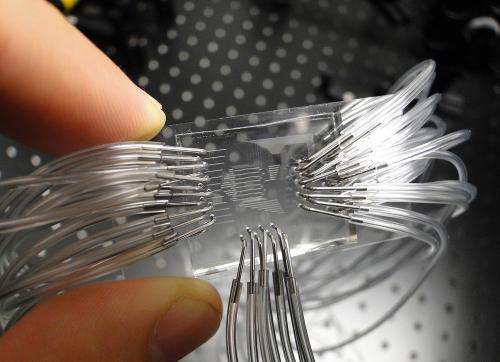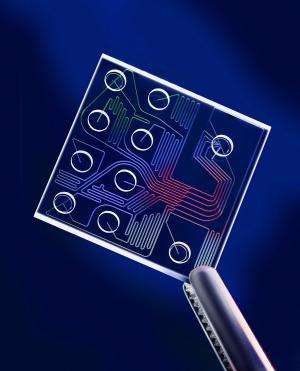Nanodevices for clinical diagnostic with potential for the international market

In order to obtain accurate and immediate diagnosis, a group of researchers in the area of Nano-Optics at the Center for Scientific Research and Higher Education of Ensenada, Baja California (CICESE), in the north of Mexico, developed a sensor based on the properties of light to perform, among other things, blood analysis, giving health specialists accurate information.
The development has resulted in a patent and publication in journals across the world; besides scientists at CICESE, researchers form the Technological Institute of Superior Studies of Monterrey (ITESM) and the Institute of Photonics of the Czech Republic were involved in the development.
Explaining the objective of this technology, leader of Nano-optics at CICESE, Victor Manuel Coello Cárdenas explained that for sciences applied to health, the challenge is healing in the quickest way. "Currently, to perform simple assessments such as the CBC requires several hours and even days and there is a lack of personalized diagnosis; we are facing that challenge with a sensor that gives accurate information which, in the future, can be used at home.
"We worked on two things: making a sensor that used optical principles at a nanoscale (nano corresponds to one billionth of a meter) and how to insert the fluid in such dimensions. The challenge is to have a portable lab on a chip, capable of making individualized measurements".

Physicist Coello Cardenas reports that researchers at the ITESM were interested in the sensor and incorporated it into the development. This is how Israel Martínez, PhD student, worked in micro fluidics linked to an optical sensor and made contact with an institute in the Czech Republic seeking technology that was not available in Mexico. The European institution offered him a one-year stay and upon his return to Mexico the sensor was finished.
The device is characterized by the application of structures that mix a liquid in motion, which contains the sample to be analyzed, to facilitate that more of it reaches the place where the actual measure (by sensing) is happening.
"It is worth noting that such sensors are developments of the 1960s, and not a new technology, but it has not been exploited. Our contribution is to realize its potential and incorporate current techniques, both of optics and nanotechnology," says the scientist at CICESE.
Coello Cardenas has concentrated his training in plasmonics, a branch of optics at the nanoscale based on the study of the processes of interaction between electromagnetic radiation and conduction electrons.
"Plasmonics is not new. It emerged in the 60's and has undergone changes, but the major change comes in the 1990s with the boost of nanotechnology. I was interested in studying the sensors for application in medicine; hence the idea of this development. "
Now that the patent is obtained, device developers are looking for investors so the sensor can be manufactured industrially and introduced into the international market. "We seek to provide scientific support to the interested investor and obtain lower costs as we are talking about expensive technology. But in the area of clinical diagnosis it can be a very important tool for giving accurate results in much less time."
Provided by Investigación y Desarrollo




















